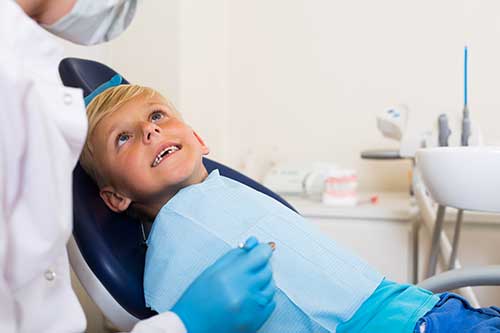The Legacy Orthodontics Diaries
Table of ContentsSome Known Details About Legacy Orthodontics Some Known Details About Legacy Orthodontics Rumored Buzz on Legacy OrthodonticsThe Single Strategy To Use For Legacy OrthodonticsThe Single Strategy To Use For Legacy Orthodontics
At Advanced Orthodontics, we offer clients with a all natural therapy experience. On top of that, we provide flexible therapy timetables, adaptable settlement alternatives and an enjoyable, pleasurable experience. leesburg clear braces. Telephone call ( 480) 357-4900 today for additional information and timetable a consultation.An orthodontist is a dental practitioner trained to diagnose, protect against, and deal with teeth and jaw irregularities. Orthodontists work with individuals of all ages, from kids to adults.
Malocclusion, or misaligned teeth, can cause oral problems, consisting of tooth decay, gum tissue condition, and challenging or agonizing chewing. Not everybody is born with straight teeth. If you have a bad bite or large rooms in between your teeth, you may desire to get in touch with a dental expert specializing in orthodontic care.
Getting The Legacy Orthodontics To Work
( Picture Credit Score: DigitalVision/Getty Images) Orthodontists utilize repaired and detachable dental gadgets, like dental braces, retainers, and bands, to transform the placement of teeth in your mouth. Orthodontic therapy is for oral abnormalities, consisting of: Jagged teethBite problems, like an overbite or an underbiteCrowded teeth or teeth that are also much apartJaw misalignmentThe objective of orthodontic therapy is to boost your bite.
While you could assume of orthodontists as primarily for kids or young adults that require braces, they can fix dental problems at any age. Orthodontists go to university, dental school, and orthodontic school.
All orthodontists are dental professionals, but not all dental professionals are orthodontists. Orthodontic residency programs provide intensive, focused instruction for dental specialists. They focus on two locations: Just how to correctly and safely move teeth Just how to properly guide development in the teeth, jaw, and faceOnce an orthodontist has completed training, they have the choice to become board licensed.
Not known Factual Statements About Legacy Orthodontics
Imbalance, or malocclusion, is one of the most common factor people see an orthodontist. It is genetic and is the result of dimension distinctions in between the upper and reduced jaw or between the jaw and teeth. Malocclusion brings about tooth overcrowding, a misshapen jaw, or irregular bite patterns. Malocclusion is usually treated with: Your orthodontist affixes metal, ceramic, or plastic square bonds to your teeth.
If you have just small malocclusion, you might be able to utilize clear dental braces, called aligners, as opposed to conventional dental braces (https://trello.com/u/legacyortho). Some individuals require a headgear to help relocate teeth right into line with pressure from outside the mouth. After dental braces or aligners, you'll need to use a retainer. A retainer is a custom-made tool that keeps your teeth in position.
They can produce extra area in the mouth without having to pull teeth. Orthodontists utilize cables, surgical screws, or plates to sustain your jaw bone.
You might need to see an orthodontist if you have: Crowding or otherwise enough space for all of your teethOverbite, when your upper teeth come your bottom teethUnderbite, when your bottom teeth are as well much forwardSpacing or concerns with gapsCrossbite, which is when your top teeth fit behind your base teeth when your mouth is closedOpen bite or a vertical gap between your front bottom and upper teethMisplaced midline, when the center of your base and upper teeth don't line up Dealing with an oral malocclusion can: Make Continued attacking, chewing, and speaking easierImprove the balance of our face and your overall appearanceEase pain from temporomandibular joint conditionsDifferent your teeth and make them less complicated to clean, assisting avoid dental cavity or cavities It's commonly a dental expert that first notices misaligned teeth during a routine exam.
The Best Strategy To Use For Legacy Orthodontics

During your very first orthodontic appointment, you'll likely have: An oral examPhotos taken of your face and smileDental X-raysPanoramic (360 level) X-rays of your face and headImpressions to produce mold and mildews of your teethThese examinations will assist your orthodontist recognize just how to proceed with your therapy. leesburg clear braces. An orthodontist is a dentist that's had training to treat your teeth and jaw
An orthodontist is concentrated on your bite, so something like a damaged tooth would be dealt with by a dental professional. Orthodontists are focused on your bite, or the way your teeth fit with each other, and the straightness of your teeth.
Ever before questioned exactly how stars constantly appear to have completely straightened teeth? The solution often depends on the competent hands of an orthodontist. What precisely does an orthodontist do? Orthodontists are dental experts who concentrate on dealing with irregularities in the teeth and jaws. Their experience exceeds simply creating a gorgeous smile; it reaches enhancing your overall dental wellness and function.
Legacy Orthodontics for Beginners

While dental braces are the most typically recognized orthodontic treatment, orthodontists have a diverse toolkit at their disposal. The particular strategy chosen relies on the severity of the case, the patient's age, and individual preferences. These tried-and-true braces utilize a system of braces adhered to the teeth and connected by wires.
These removable trays are personalized to considerably move the teeth's position. In instances of narrow jaws, palatal expanders can be used to develop area for correct tooth positioning.